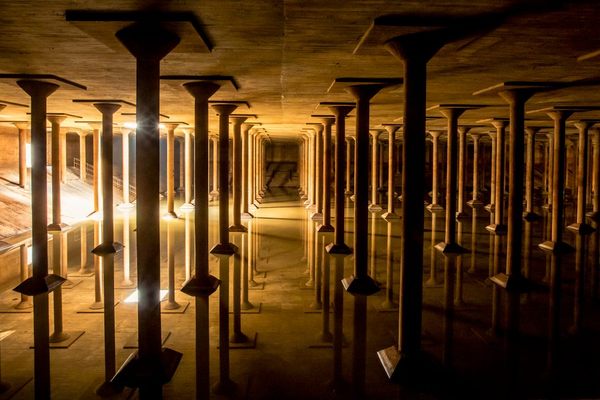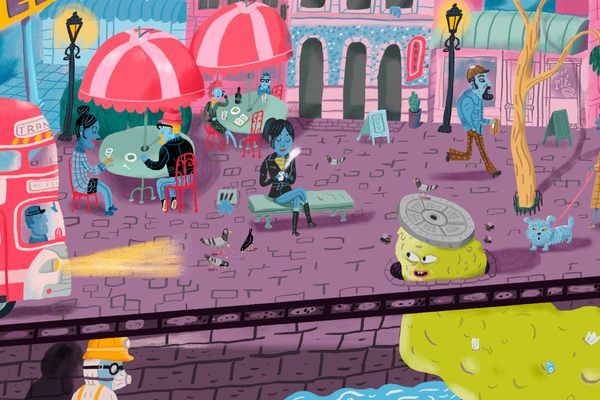The 19th-Century Iron Balls Still Cleaning the Paris Sewers
Old postcard of Paris sewer workers (19th century) (via Claude Shoshany/Wikimedia)
When the sewers of Paris get clogged with putrid waste, they’re sometimes cleaned the same way they were over a century ago: with a giant, rolling ball.
Models of these iron and wood “boules de curage” are on display at the Paris Sewer Museum (Musée des Égouts de Paris), which is a working sewer station that lets visitors explore the evolution of this hidden infrastructure. The museum is accessed through a rather unassuming stairwell at the Quai d’Orsay, something which almost vanishes into the waterfront not far from the Eiffel Tower and the Jean Nouvel-designed Musée du Quai Branly with its pristine gardens by the Seine.
Reading museum placards while you walk on grates above a river of sewage (the smell isn’t as bad as you might think) may seem unusual, but people have been touring the Paris sewers since the 19th century, including during the Exposition of 1867 when boats rode through the tunnels. This municipal-sponsored tourism wasn’t just a pungent curiosity — the city really wanted to show off its subterranean half. Baron Haussmann, the city planner so influential with the broad boulevards we know Paris for today, worked with engineer Eugène Belgrand in the 1850s to modernize the formerly haphazard array of tunnels into something that would accommodate the city’s booming population. (A similar problem was being addressed at the same time in London to combat its “Great Stink” of 1858.)
Sewers of Paris (1861) (photograph by Nadar)
Different shapes of sewer tunnels (1906) (via Internet Archive Book Images)
But despite the vast improvements, the over 2,100 kilometers of centuries-old sandstone tunnels were far from uniform, and while dredging boats, and even people who raked the muck, helped to keep the flow, sometimes it was out of their reach. Enter the sewer balls, an idea dating to Belgrand’s day. Sort of like a drain snake for a kitchen sink clog, the metal and wood balls of varying sizes to fit the assorted old tunnels would be given velocity and then bowled through the blocking sludge.
The sewer ball on a vintage postcard (via delcampe.net)
The balls on display in the Paris Sewer Museum (photograph by the author)
Long before the modern Paris Sewer Museum, an example of the ball was displayed at the Exposition Universelle of 1878, the third Paris World’s Fair. A glowing article in La Revue Scientifique described how the ball was rolled against the blockage and let loose to “passe avec violence” against the obstruction. If there were ”matières solides” (“solid materials”), there were ”chased,” but “toujours suivies par la boule” — “always followed by the ball.”
Victor Hugo called the Paris sewers in his 1862 Les Misérables a ”colossal subterranean sponge” — another Paris beneath the streets soaking up the filth of the surface. While you can no longer (legally at least), take a boat tour of this labyrinth, through the museum you can get an idea of just how impressive this necessary infrastructure is, and how some unusual methods had to be developed to keep it working for so long. It may not have the same allure as the “Grands Boulevards” above, but there is an odd beauty to the human ingenuity constantly at work below.
The Paris Sewer Museum (photograph by the author)
Walking below the pipes (photograph by the author)
One of the service access points (photograph by the author)
Memorial to Paris sewer workers from WWII (photograph by the author)
Entrance to the Paris Sewer Museum (photograph by the author)
READ MORE: PARIS SEWER MUSEUM, Paris, France









Follow us on Twitter to get the latest on the world's hidden wonders.
Like us on Facebook to get the latest on the world's hidden wonders.
Follow us on Twitter Like us on Facebook